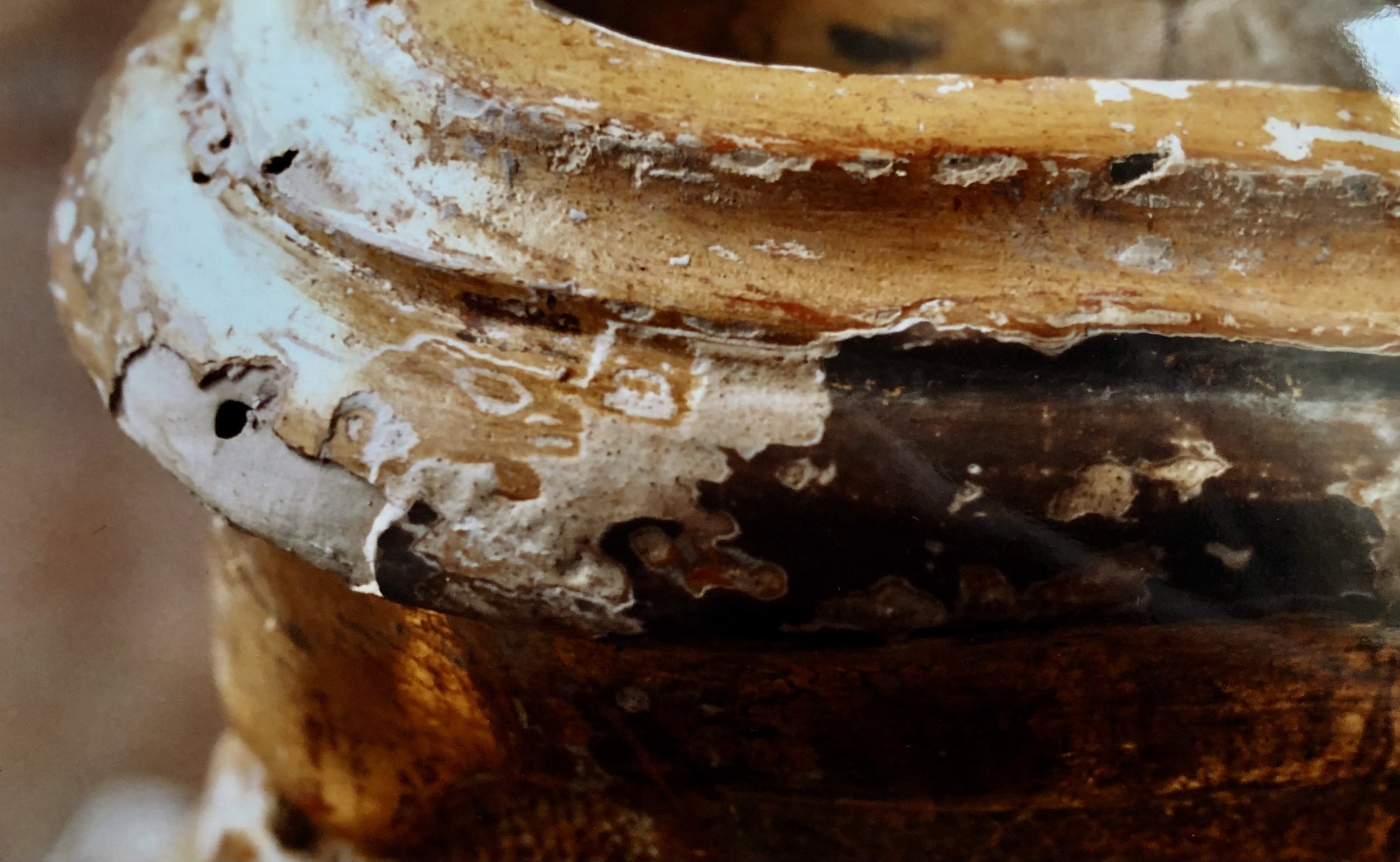THE STUDIO

The use of traditional, thus perishable materials allows the quality control necessary to manage the restorative project. No industry pre-packaged jar with an expiration date, no change of formulations by a factory. Dry pigments, ochres, clays are all kept in water suspension and distempered with the appropriate glue size when necessary.

The basic clay colors are in suspension. They will be refined from the charges and residue present, into the dry cones mixed, to achieve the appropriate color and shade.

The gesso cake is the mixture of calcium and glue mixed to the appropriate consistency and strength. The top gelatin layer is to delay the drying time and protect the gesso moisture content. Gesso composition and their structural quality vary depending on the country and period of origin of the objects and the object’s function.

Not merely embellishment or specialized craft, the original gilding scheme and manner is integral to the object’s authenticity and level of craftsmanship. Sable tips for gold leaf. Mix squirrel for silver leaf. Top position is marked.
CONTINENTAL CLASSICAL FURNITURE

Four Armchair a la Reine. Signed N. Hertaut. Designed in 1755 by Constant D’Ivril. Sold at auction in Paris, June 6, 1975 - Lot #99 to the Louvre Museum inv.oa 10594

Detail of the back, strong ornate deeply cut double moulding shoulder

One of a set of four armchairs. Italian Venice ca. 1730. Gessoed and water gilded walnut, upholstered in modern Genovese velvet. In the collection of the J. Paul Getty Museum.

During treatment

The treatment consists of the safe removal of all the obscuring non original gilded layers - all four of them.

One set of two from the Palazzo Carrega Cataldi. Designed by Lorenzo de Ferrari. 1680. 1744. Genova c. 1743. Water gilded and gessoed linden wood, mirror glass, pine, the backs paneled in walnut, height 277cm. Acquired by the Metropolitan Museum of Art in 1991.

Detail of the fine soft recutting. The fish net ground game is consistent with the Genovese historical tradition of fisherman and the Port of Genova ancient prosperity.

Details of winged female figure the soft natural treatment of the recutting of feathers. Following the exceptional wood carving.
FRAMES

Weenix Jan still life, carved oak gessoed recut and water gilded. After a design by Daniel Marot. Philadelphia Museum of Art Johnson Collection Jc 633. Complete restoration of the gesso ground and gilded surface. The frame was in the past, stripped of its original gesso and gilded ground and reduced in size.

Water distemper gilding, the cove is burnished in contrast to the satiné and matte gold grounds.

French 1720 circa Paris, carved walnut gessoed recut and water gilded in contrast. Superb recutting undisturbed patina.
